Category — Life
The people I love the best
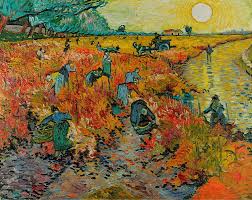
This. This. This.
This poem by Marge Piercy.
This poem about the hard sweaty work that needs to be done–and those who harness themselves, like an ox to a heavy cart, and do it.
The people I love the best
jump into work head first
without dallying in the shallows
and swim off with sure strokes almost out of sight.
They seem to become natives of that element,
the black sleek heads of seals
bouncing like half-submerged balls.
I love people who harness themselves, an ox to a heavy cart,
who pull like water buffalo, with massive patience,
who strain in the mud and the muck to move things forward,
who do what has to be done, again and again.
I want to be with people who submerge
in the task, who go into the fields to harvest
and work in a row and pass the bags along,
who are not parlor generals and field deserters
but move in a common rhythm
when the food must come in or the fire be put out.
The work of the world is common as mud.
Botched, it smears the hands, crumbles to dust.
But the thing worth doing well done
has a shape that satisfies, clean and evident.
Greek amphoras for wine or oil,
Hopi vases that held corn, are put in museums
but you know they were made to be used.
The pitcher cries for water to carry
and a person for work that is real.
“Marge Piercy is not just an author, she’s a cultural touchstone. Few writers in modern memory have sustained her passion, and skill…” — THE BOSTON GLOBE
Image: Vincent Van Gogh, Red Vineyard at Arles (1888)
September 2, 2020 2 Comments
(grand)Motherhood 2.0

All of a sudden, I am one: a grandmother.
Well, perhaps not “all of a sudden.” It involved one of my children intertwining lives with an extraordinary partner, and then these two extraordinary people deciding to make another human. And then there were those forty-some-odd weeks during which two cells grew into Henry.
So what is a grandmother these days? Who am I as a grandmother?
I think of my own grandparents. On my father’s side was Anna, an immigrant, poor, illiterate. Her husband died before my parents met. He was, I think, a day laborer. No one talked about him as I was growing up. Much later my uncle told me he was a wife-beater. Anna had suffered from crippling arthritis since she was 16. Her hands were claw-like and her knees were heavily bandaged. She lived in a dark apartment in an old building in a marginal neighborhood that today is busting at the seams with kombucha-drinking visual artists.
I have no memory of her ever visiting our house. We visited her, a once-a-month (or less) chore considered by all an unpleasant experience. She was cranky and nasty, undoubtedly due to constant pain, the trauma of her marriage, the dreariness of her life. None of which I realized at the time. To me she was an old old lady (she would then have been about my age) who lived in a dank, smelly apartment and made terrible food we were forced to eat. I remember her night table crammed with prescription medicine bottles. I was petrified when she touched me with those claw-hands.
My maternal grandparents were a sweet pair, my loquacious Nanny and my quiet, dreamy grandpa. They were not a big part of my life, not even really a small part of my life. This was for two reasons: One, my father hated them (as he hated all of my mother’s family) and two, they moved to the Promised Land (aka California) when I was seven. I remember one, and only one, time when I was solely in their care. They were at my house–my parents were off somewhere, perhaps making my brother—and my grandmother bought me a package of Hostess snowballs. Those were the round little cakes covered in marshmallow and coconut. And pink. My mother would never have let them into the house. I remember sitting at the kitchen table, peeling off the marshmallow covering, rolling it into a ball in my palms and then bouncing it off the wall. My grandmother laughed. At that moment, I could not have loved her more. But then they moved 3,000 miles away. And we visited once.
I know those ironic images of grandmas. We all do: iron-gray hair in tight curls, alternately baking cookies and knitting scarves, kindly, crinkly-eyed, bosomy women. In aprons. Not my grandmas. And, needless to say, not me.
There is also today (and for at least the past generation that includes my own parents as grandparents) a vast population of distant and disconnected grandparents whose kids moved across the country or across the ocean. Visits are infrequent and are “occasions.” Or it may be that their own lives—divorces, remarriages, stepkids and step grandkids, second careers—stretch them too thin to be involved/ in the moment grandparents. Again, not me.
So I know what I am not.
What am I? I don’t know yet.
But I do know I will be there, part of everyday life, familiar, open-armed, open-hearted, a hugger, an on-the-floor-playing partner, a doer, a laugher, a listener. And there might be cookies.
Grandmotherhood 2.0, bring it.
August 26, 2020 7 Comments
And so it begins
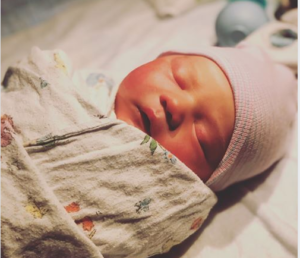
On July 12, 1817 Henry David Thoreau entered the world. On that date in 1864, George Washington Carver was born. Forty years later, Pablo Neruda joined the human race.
Among the more than 390,000 humans to make their first appearance on our planet on July 12 of this year, 2020, was Henry Burns Hager: fat-cheeked, silky-haired with a cupid-bow mouth and perfect seashell ears.
He arrives healthy in the midst of a raging pandemic. He arrives cherished and embraced in a time of deep division and scarring incivility. He arrives with all the promise of the future at a time when the future feels troubled and fragile. In arrives in hope at a time of fear.
His parents are two of the most extraordinary human beings I know. I would say this, truly I would, if I were not related to them.
But I am.
Henry’s father is our son, my middle child. Henry’s mother is my daughter-from-another-mother. (The “in-law” designation doesn’t fit at all, as if a document unites us rather than our hearts.) These two, separately and together, are compassionate, big-hearted, kind, thoughtful, funny, smart, loving, adventurous, quirky, resilient. And more. I could pile up the adjectives. But you get the idea.
Henry enters the world with privilege. I am referring not to the privilege of his sex, race and class, enormous as they are, but to the privilege of being born to these parents.
Welcome to the world, Henry Burns Hager. Make it a better place.
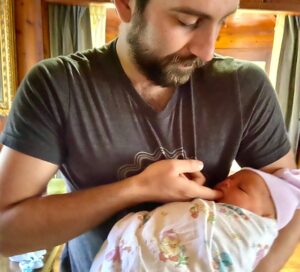
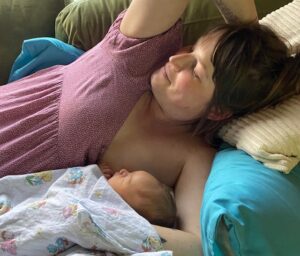
July 15, 2020 11 Comments
And sometimes

More often than not I write these Wednesday columns from a place of concern, disappointment, of anger, fury, sometimes fear. And shame. Such a dark time. So much that drains the spirit, that brings a person to the brink of despair. This time, my country, my “fellow Americans,” as Nixon used to say. (Quaint now to think how evil we thought this man was.)
But today I awake at the moment of dawn, when sunlight streams through the mesh of the tent. The air is cold, fresh, new, not yet breathed. I awake to the sounds of some of the 225 species of birds that make this lake their home. I awake to the soft snores of the person with whom I’ve made a life, children, a home.
And for a moment–sinking deep, oh-so-deep–into this privilege, I think: This is good. I live on an amazing planet. Isn’t it a blessing, an astonishment, a glory, that despite the cruelty and hatred, the nooses made of bread dough, the furious insanity of 3 am tweets, the 2.3 million we put in cages, despite it all, the sun comes up, the sky is cerulean, the birds sing.

July 8, 2020 2 Comments
What I don’t want to write about

Here’s what I do not want to write about:
>The shame of being an American when the president of your country is who he is;
>The pain of realizing the deep and painful (and very dangerous) inequities this virus has made visible to all, including but not limited to the “petri dish” of prisons, the “death trap” of assisted living, the terrible irony of “sheltering at home” for the homeless;
>The fear of living in a country so ill-prepared to take care of itself;
>The sadness of living in a country where reason, compassion and integrity are in shorter supply than PPEs;
>The anger of being captive to a moment in which everything, everything, has been transformed into an ideological battle;
And, stay with me for this last one…
>The weariness of hearing one more story, reading one more post, seeing one more pic of someone’s victory with sourdough starter.
What do I want to write about?
>The importance of three-dimensional people in one’s life (no! not holograms);
>The pleasure of a full-body hug;
>The warmth of the family around a table;
>The joy of travel;
>The not-ever-taken-for-granted-again freedom of an unmasked life.
April 29, 2020 No Comments
The Experts


Do you know who the experts are in “sheltering* in place”?
The 2.3 million men, women and children currently warehoused in our prisons, jails and youth facilities.
They know what lock-down means.
They know what social isolation means.
They know what social distancing means.
They know what it is like to live without access to restaurants, coffeehouses, bars, libraries, movie theatres, museums, retail stores.
They know what rationed health care means.
They know what rationed toilet paper means.
They know cabin fever.
They know fear of others.
They know dread, angst, uncertainty
This is their lives. Every. Day.
*If you can call the concrete cages they live in “shelter.”

March 25, 2020 2 Comments
We care
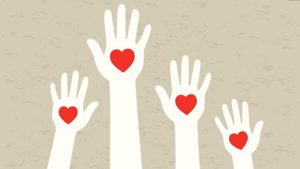
“In every crisis, doubt or confusion, take the higher path
– the path of compassion, courage, understanding and love.”
― Amit Ray
Yes, there is the guy who drove around Chattanooga buying every bottle of hand sanitizer on the shelves at Dollar Tree, Walmart, Staples Home Depot, and then, having created a shortage, took to the highway with a loaded UHaul price-gouging his own community. Yes, there are the hucksters who rushed to the internet to sell flimsy, useless face masks. Yes, there is panic-buying, hording—even fighting—in grocery stores.
But, my friends, there is also generosity and compassion, thoughtfulness and community-mindedness. There are humans being kind to humans. Because, despite the White House-fueled incivility and vitriol that has become the “new normal,” despite the real and evolving health (and attendant financial) crisis posed by the coronavirus, this is what we humans do. We care about—and for—each other.
Let’s take a moment to recognize, celebrate and support the generous and compassionate actions of others, both big and small.
In Eugene, Bagelsphere is home-delivering a dozen bagels for free to any senior who cannot or does not want to risk going out to shop.
Eugene-based Oregon Community Credit Union (owned by more than 150,000 members) has told its mortgage customers that they can skip April payment with no penalty or fees.
Laughing Planet is offering free meals to school kids on meal assistance programs at all its Pacific Northwest locations.(Students are not required to show proof that they are part of a meal program.) In Lincoln City, OR, Grill 1646 is giving away hotdogs and PB & J’s to homeless students who will be unable to get free meals due to school closures.
Shine Distillery and Grill in Portland is making its own hand sanitizer and giving it away for free. (The product comes from the process of distilling their own spirits.)
Seattle-based REI has closed all its retail stores—and will continue to pay all its employees during the closure.
Trader Joes has expanded its paid sick time to all of crew members.
And then there are the grander gestures:
Zion Williamson, the 19-year-old superstar of the Pelicans basketball team, announced that he will cover the salaries of all laid-off workers at the Smoothie King Center in New Orleans for the next month.
That’s the most dramatic move in the world of professional sports, but the following teams have also pledged to support the (mostly hourly-paid) stadium and arena workers out of work due to game and tournament cancellations: Dallas Mavericks, Houston Astros, Indiana Pacers, LA Clippers, LA Lakers, Golden State Warriors, Miami Heat, Milwaukee Bucks, Detroit Pistons, Chicago Bulls, Cleveland Cavaliers, Brooklyn Nets, Atlanta Hawks…the list goes on.
Renowned Washington, D.C chef and restaurateur José Andrés announced that he was transforming some of his restaurants into community kitchens to offer lunches for those in need of a meal.
What is happening in your community? How can you help?
March 18, 2020 No Comments
Tears

Today I made two people cry.
No I didn’t tell them bad news. No I didn’t yell at them.
In fact, the opposite.
I told one man that he was a talented writer, that the stories he had to tell were very much worth telling. We were sitting across from each other in the penitentiary’s visiting room. He is 37, convicted of aggravated murder and serving a sentence of life without parole. There are many other things to know about this man, some that will scare you, some that will crack open your heart. But what I want to tell you now is that when I told him how I felt about his abilities, he looked down at the floor and was silent for a long moment. When he looked up, his eyes were brimming with tears.
“I don’t cry,” he said. “I don’t ever cry.”
He said it had been a long time since someone believed in him, that he no longer believed in himself.
A few hours later I was helping to serve meals at Food for Lane County’s innovative Dining Room—not a soup kitchen but a service-at-the-table, cloth-napkin restaurant-style venue that feeds as many 300 hungry people a day. A woman at one of my tables had finished eating and was sitting, staring into space. It was not a dreamy stare. She sat like that for close to ten minutes, almost motionless. I asked if she was okay, if there was anything she needed.
She looked at me hard, like she was trying to remember if she knew me (no) and then if she wanted to engage with a stranger (yes).
“I was taught to trust people,” she told me. “But they take advantage of that. They see I trust and they use that.”
A woman living on the streets, living on the edge. Of course she is right to be cautious, to protect herself, to present as less vulnerable than she feels, than she is. I didn’t know what to say. But I had to say something.
“I hear you,” told her. “I understand as well as I am able to. But I have to tell you, I think most people are good. Most people are good.”
‘I want to believe that,” she said. “I wish I could believe that,” she said. “I no longer believe that,” she said. And then she cried.
March 11, 2020 No Comments
Plantation life

At seven in the morning, barely dawn, the air is already warm and muggy. The only sound I hear as I run past the gated mansions of Winter Park, Florida, is that of leaf blowers. The only people I see are landscapers, crews of brown and black men. The mansion dwellers have not yet emerged to begin their days as one-percenters.
I have read the statistics on income inequality. I know that America’s top 10 percent averages more than nine times as much income as the bottom 90 percent. I know that Americans in the top 1 percent average over 40 times more income than the bottom 90 percent. And the gap has gotten progressively wider. Since 1979, the before-tax incomes of the top 1 percent of America’s households have increased more nearly seven times faster than bottom 20 percent incomes,
I am not ignorant of the life lived by rich people. I have been in homes that have 200-bottle wine cellars and wood-fired pizza ovens and bathrooms crafted from more Carrera marble than Leonardo used in a lifetime. I once gave a talk in a home where all the sinks were hand-thrown porcelain bowls, each hand-painted by a different Italian artist.
I am not ignorant of the lives lived by those on the margins today. At the Food for Lane County’s Dining Room I help serve a mid-day meal to as many as 300 hungry, often unhoused people. It is sometimes the only meal they will eat that day.
I run past those mansions, those 20,000 square-foot, 8-bathroom, porticoed, colonnaded residences sitting prettily on gorgeously landscaped half acres at the end of a gracefully curving flagstone driveways. And I catch a glimpse of the men, already sweaty as they prune trees and wheelbarrow mulch and blow palm fronds into neat piles. And I imagine their wives inside standing in front of $40,000 Wolf stoves fixing breakfast for the family in the mansion, or upstairs making the beds, or hurrying to put in the first load of laundry.
Maybe it’s that Tara look-alike mansion, or that much-older African American gentleman bent over at the curb sorting the family’s recyclables. Maybe it’s the sultry air, the cloying closeness of it. But all I can think of is Plantation Life, the plantation mentality. This isn’t history. This is today. We live in a country divided more completely, more brutality, more enduringly than what we are acknowledging at this particular political moment. We live in a country divided into the light-skinned ruling elite and the dark-skinned workers. America is a plantation.
February 12, 2020 2 Comments
Morning becomes her

Tell me: Is there anything more gloriously sensual than lying between body-warmed flannel sheets on a chilly winter morning watching the dawn slowly light up the room? I think not.
As much as I love nestling into bed at night and reading a book until my lids grow heavy, I love this slow awakening more. I have long awakened without the aid of an alarm, both a blessing and a curse. When I must be somewhere early, it is a blessing not to be jarred awake by whatever tone—however dulcet—I’ve chosen for my iPhone alarm. My slumbering husband appreciates this too. But at 5:45 am, in the dead of winter, when I don’t need to be anywhere until 9, this early rising can be a curse…unless I recast these unhours as an opportunity to drift and self-snuggle, to wander in and out of light dreams. And, oh yeah, to make to-do lists. That last one would not seem relaxing. But I am a list-lover, and lists calm me.
I was not always such a happy sleeper. Years ago, as an extra-added-attraction to my (undiagnosed) post-partum depression, I suffered persistent insomnia. Well, it would have been persistent had I not been prescribed, re-prescribed and re-re-prescribed Ambien. Taking Ambien was like flipping a light switch. One moment I was tense, hyper-alert, staring at the ceiling; the next, peacefully asleep until morning. I loved that little blue pill. I loved it every night. I loved it even when I hated it.
I didn’t fall asleep without it for more than a year. Over the course of that year I slowly slowly reduced my dosage, first shaving off a little sliver of the pill, then a little more. Then I was down to half a pill. Then a quarter. Finally, toward the end, I could barely see the spec of pill I was taking. It was, as my husband rightly pointed out, a “sub-sub-clinical dose.” It was not doing me any pharmacological good. But if I had managed to break my biochemical addiction, I was still addicted to the act of taking the pill.
I don’t know if it was that experience that made me the happy early riser I became. But I do know that many mornings, opening my eyes in the dark, my first thought is: I fell asleep last night. I slept.
Painting: “Flaming June,” by Sir Frederic Leighton, 1895.
February 5, 2020 4 Comments





